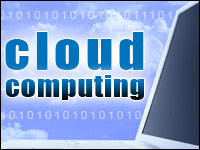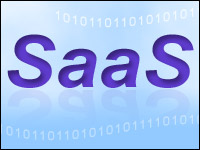
SaaS has become an increasingly popular model for cloud computing adoption, with 68 percent of U.S. respondents in a recent study from Avanade reporting adoption of SaaS at some level, and 62 percent of global respondents reporting plans to move toward SaaS in the next year.
SaaS and cloud computing represent a clear evolutionary shift in application delivery and usage. The model is maturing as processing power, storage, high-speed bandwidth, security and reliability have reached a point that matches the performance people have come to expect from their on-premise solutions. That said, moving to the cloud isn’t for everyone, nor is it ideal for every aspect of business.
In reality, the SaaS vs. on-premise debate doesn’t need to be an either-or argument. Having the flexibility to utilize solutions either on-premise or through the cloud affords companies the choices they need to succeed in their own specific business environments. If a company finds a solution that can help them realize their business objectives, overcome challenges and capitalize on market opportunities, then it should be able to choose the means by which this solution is delivered.
Cloudy With a Chance of Rain
Almost all of us store data in the cloud. Anyone who uses an online photo-sharing site, a Web-based document management service or a social networking application is computing in the cloud. If it’s really so ubiquitous, why isn’t every business migrating its data to the cloud?
Well, because things can go wrong, including in the cloud, and as we all know, when it rains, it pours.
By now, the story of Microsoft and T-Mobile’s notorious Sidekick data debacle is well-known; Microsoft’s servers failed on October 2, affecting some of the Sidekick handset users who could no longer access the mobile Internet or email.
What really put things over the edge was the Sidekick server and its backup server becoming corrupted in the process of restoring customer access. The users affected by the initial outage saw all of their data erased. This incident highlights the growing debate of SaaS vs. on-premise software — something we hear every day.
Traditionalists favor on-premise software deployment because it’s familiar. However, having the flexibility of to host enterprise applications in-house and customize them to suit a particular environment is tremendously liberating. Having solutions on-premise may seem like a more secure way of doing business, because all data is kept within a company’s physical walls.
However, SaaS offers some unique benefits as well. It requires no infrastructure investment and eliminates the need for installations and maintenance, which is very attractive, especially when budgets are a concern.
An event like Sidekick’s data loss reinforces fears about the security and long-term viability of SaaS. Asking whether the SaaS model is fallible is like asking whether popular Web sites have ever suffered outages: The answer is yes. Amazon.com, Gmail — even entire countries’ servers have shut down on occasion.
Some of the worries over SaaS are legitimate, but it wasn’t so long ago that organizations were questioning the security of doing business on the Internet. SaaS must go through a similar process to earn trust and acceptance, which it will. Revolution is painful, and evolution takes a long time. Years ago, CFOs had vaults in their offices to hold their companies’ valuable cash; none do that today.
A Compromise: The Fog
Many companies tailor their solutions toward a specific audience and therefore have a good idea of what their target customer will need. A vendor of government security solutions, for instance, knows that its customers — federal agencies and contractors — will deploy these solutions on-premise (though this may change in the near future).
Whether it’s to adhere to certain reporting standards or to keep critical information within a locked-down environment — think of a bank vault-style server room — these customers are completely justified in their preferences, which means that vendors are equally justified in manufacturing solutions for a specific type of audience.
Conversely, some of the advantages of SaaS commonly cited by many businesses are ease of use, convenience and continual support from vendors — all characteristic of a subscription-based cloud service. Most strictly online vendors rarely hesitate to advertise their solutions as cloud-based and low maintenance. Their customers want the freedom and easy access that cloud computing provides.
Nevertheless, in a rapidly changing global economy, not every customer fits into a niche. Sure, we can determine our average type of user and focus our energies on them, but we’re also at a crossroads. SaaS adoption is skyrocketing, but the need for on-premise solutions will never completely disappear. There will always be customers who want to maintain complete control over the applications used in their companies, as well as those who just want to keep things the way they once were.
Why would we want to limit their options? Why would we want to limit our options? People value having a choice; this is why we have a free market.
Whether customers choose to use your solution in the cloud or on the ground, they’re still choosing you.
Tom Allanson is CEO ofPerfectForms.















































Social Media
See all Social Media